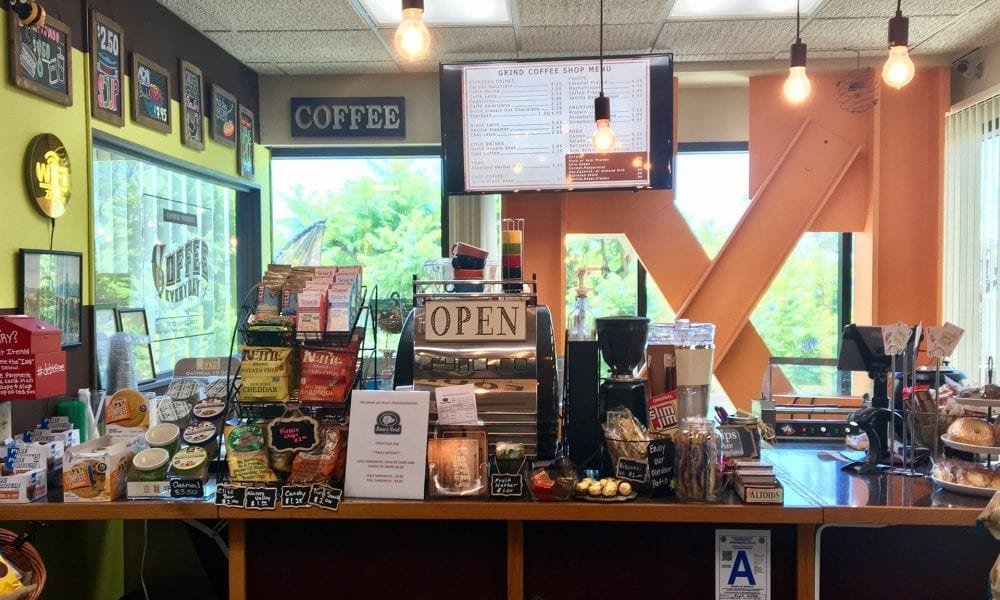
Coffee Shops that are Already in 3018!

Customers Get to Have their Pictures Printed on their Drink’s Foam
Traditionally, only the most exceptionally skilled baristas could come up with intricate foam art patterns by hand. Now, thanks to the evolution of technology and 3D printing with ink-jet systems, restaurants can now print out complicated designs on lattes and cappuccinos. The technology prints out natural coffee extracts called Ripple Pods.

Lufthansa is set to be the first global brand to use the technology. They are expected to roll it out to their First and Business Class lounges later in the year
To customize the print design and quality, all one needs to do is access the Ripple app and voila! The magic happens. Inspirational messages, logos, images of loved ones, smileys, whatever really is on one’s mind.
To source the images, the Ripples app provides a well-stocked content library that customers can submit images from their camera rolls which is then transformed into foam art at the venue. Incredibly, the image printing process only takes about 10 seconds. At present, the Ripple Maker, priced at $999 (£640), is only available to commercial establishments with coffee shops.
Frozen Coffee Cubes
With summer fast approaching, it may be a good idea to take up chilled coffees in the mornings instead of the conventional piping hot drinks that double-up as hand warmers, we’ve all grown accustomed to.

To brew frozen coffee, all one needs to do is grab unused ice trays and gauge how much liquid the tray can hold. An excellent way to do this is to use a teaspoon or tablespoon in order to completely fill one ice cube mold before multiplying the actions on the remainder molds in the tray
Once the estimation is okay, brewing coffee is the next phase. Ideally, the brew method of choice should be a cold brew. When coffee is brewed this way, it usually lacks the distinctive bitter taste that hot coffee tends to have because it is brewed as a concentrate. While this is an obvious advantage, the downside to doing this is that making cold brew ice cubes is a process that tends to require lots of time to complete, about 24-30 hours. The brewing in itself usually takes 12-24 hours before all is set, then a couple more hours to ensure that the brew freezes.
Once the coffee ice cubes are ready, they can serve a multitude of applications ranging from:
- Coffee flavored milk: once milk or cream is poured into the ice cubes, an exciting drink emerges.
- Chilling morning brew: dipping the coffee ice cubes with some hot coffee can help produce a mellow tasting concoction. Normally when ice cubes are added to drinks they tend to water down on the quality, in this case, no such thing is possible.
- Cocktails: Yes, coffee-flavored cocktails are actually a thing. There’s a couple of options available worth experimenting with. Whiskey, cream liqueur, and tequila are just a couple of combinations worth checking out. To really pull off this combination, it is highly recommended that one uses lighter-bodied single origin coffee.
- Energy boosting smoothies: The coffee ice cubes can be thrown in a blender to mix up with peanut butter, flaxseed, frozen fruit and greek yogurt to produce a delightful smoothie.
- Coffeesicles: Sounds exciting right? It is. The coffee ice cubes can be laced with blended berries, chocolate, and vanilla before mixing up with popsicle sticks to create the odd-sounding yet sweet tasting coffeesicles.
Coffee Grounds For Gardening

Coffee grounds can serve a multitude of gardening functions. They can be used as mulch, fertilizers, cat repellants around flowers and as worm food
Ever wondered where to take coffee grounds? Well, worry no more. Composting with coffee is a fantastic way to make utility of products that would have otherwise been thrown out with the garbage. In addition, using coffee grounds as compost can help add nitrogen to compost piles. Since coffee grounds are considered as green compost material, to come up with a well-balanced compost solution, one should ensure to add some brown compost material.
Coffee grounds can also be used as fertilizers since they add organic materials to the soil. When used that way, coffee grounds can add drainage, aeration and water retention to the soil. As fertilizers, the coffee grounds will encourage earthworms and other microorganisms to cohabitate in the soil.
More inAdvice
-
`
Adults in Ohio Face Stricter Rules to Obtain Driver’s License
Ohio has passed a new law that will change the way adults under 21 get their driver’s licenses. Signed into law...
July 31, 2025 -
`
Gen Z Craves Career Guidance, But Their Parents Are Struggling Too
Gen Z is stepping into the future with curiosity and ambition—but they’re not doing it alone. A growing number of teens...
July 25, 2025 -
`
Do Car Insurance Companies Offer Pay-As-You-Go Plans?
Car insurance premiums often feel unfair to people who rarely drive. Yet, most traditional auto policies still charge a fixed monthly...
July 17, 2025 -
`
Why the Koenigsegg Sadair Spear Is the Ultimate Hypercar Beast
Koenigsegg has revealed a new beast—the Sadair’s Spear. Tuning its focus on raw performance and brutal speed, this hypercar marks the...
July 11, 2025 -
`
Which States Have the Safest—and Riskiest—Drivers in America?
Driving safety isn’t just about skill. It’s also about location. A recent nationwide report shines a spotlight on where drivers are...
July 4, 2025 -
`
How to Save on Tesla Car Insurance Without Compromising Coverage
Owning a Tesla often brings savings on fuel and a futuristic driving experience, but the conversation changes quickly when it comes...
June 26, 2025 -
`
10 Weird Cars That Turned Heads and Won Hearts
Some cars turn heads with speed, others with luxury—but a rare few grab your attention simply by being delightfully strange. From...
June 20, 2025 -
`
Next-Gen Jeep Cherokee Expected to Arrive by Late 2025
After a break of two years, Jeep is prepared to relaunch the Cherokee brand. The automaker confirmed the return with fresh...
June 12, 2025 -
`
9 Tips to Make Night Driving Safer and Less Frightening
Once the sun dips below the horizon, driving becomes more than just a commute—it becomes a challenge. Limited visibility, harsh glares,...
June 6, 2025















You must be logged in to post a comment Login